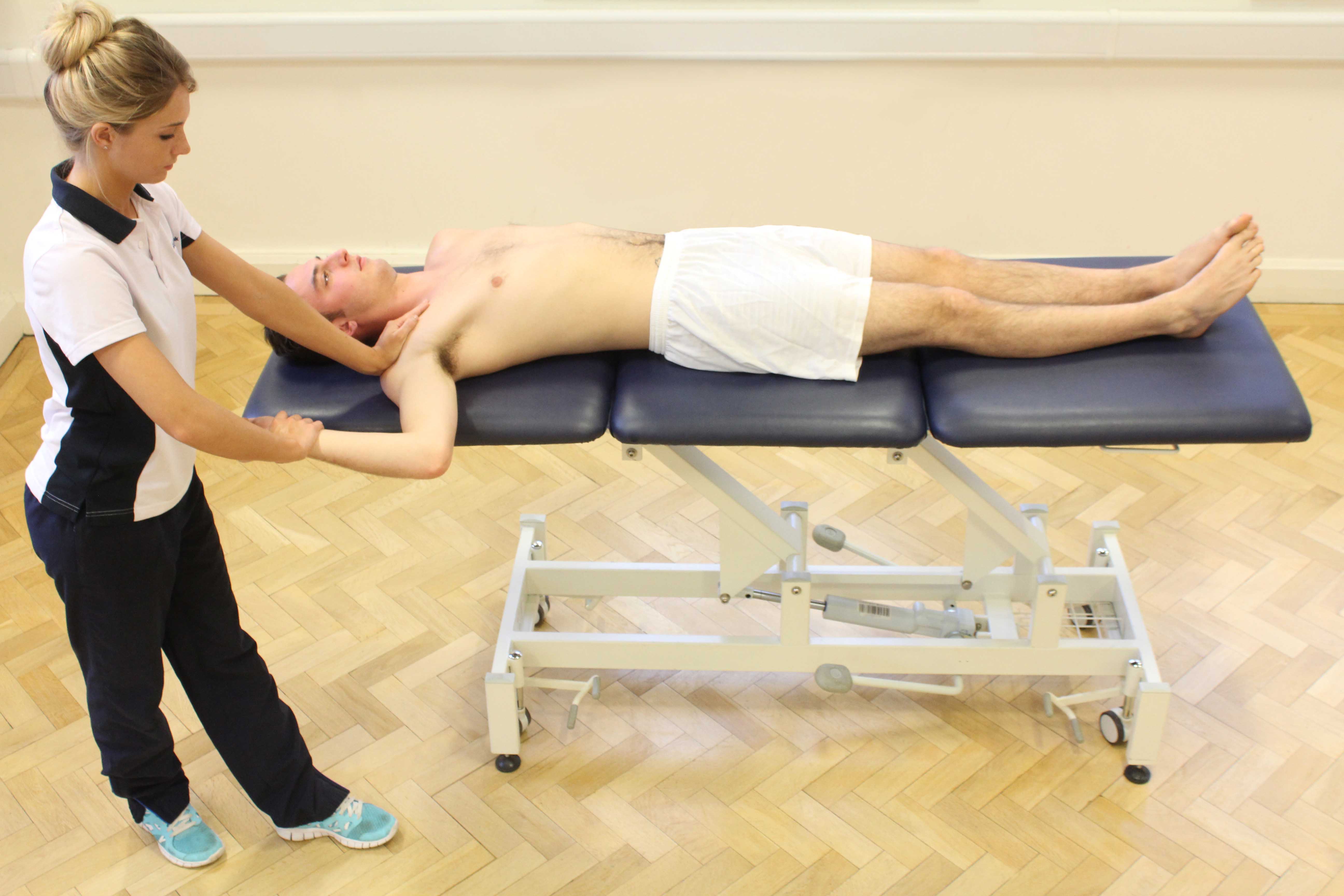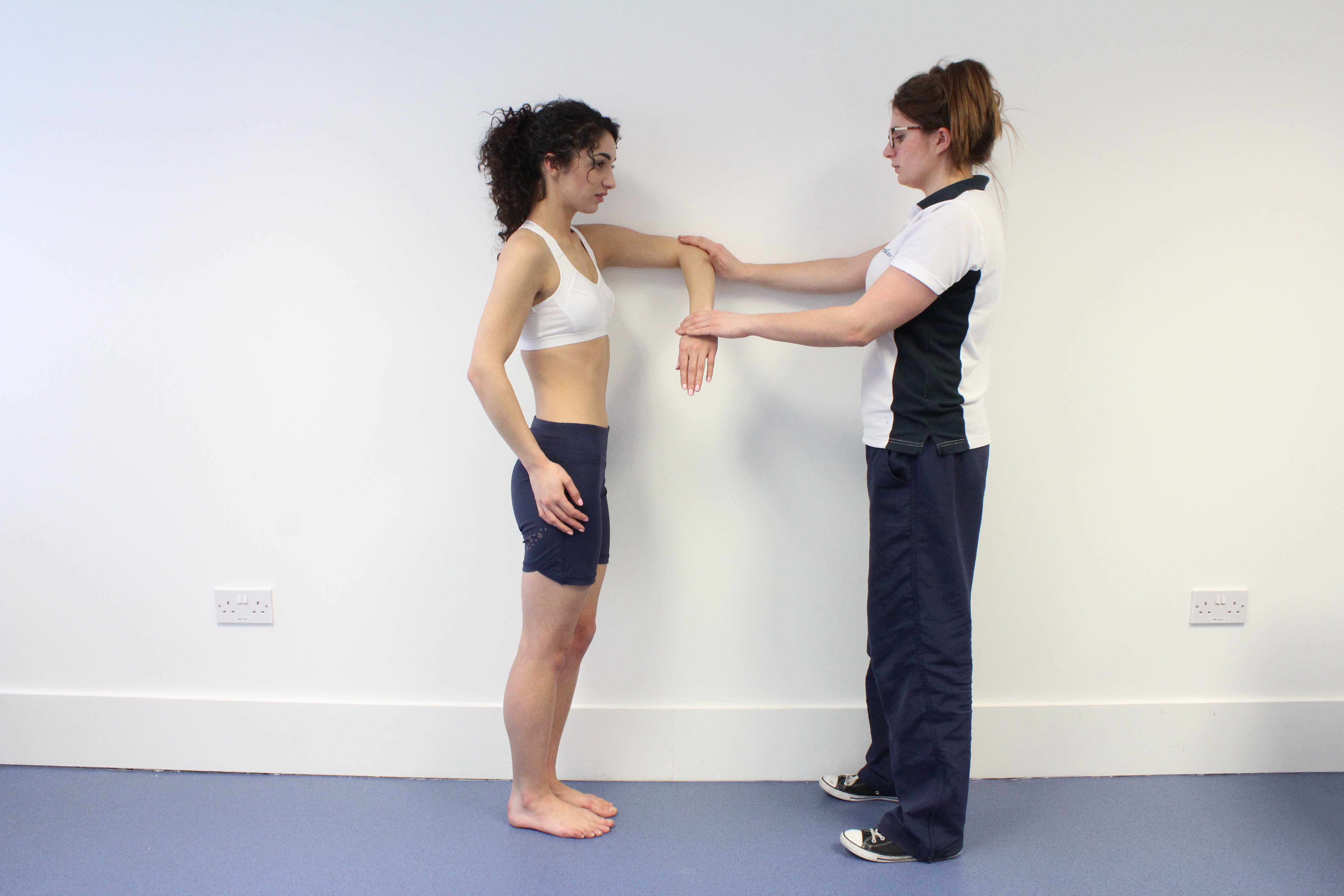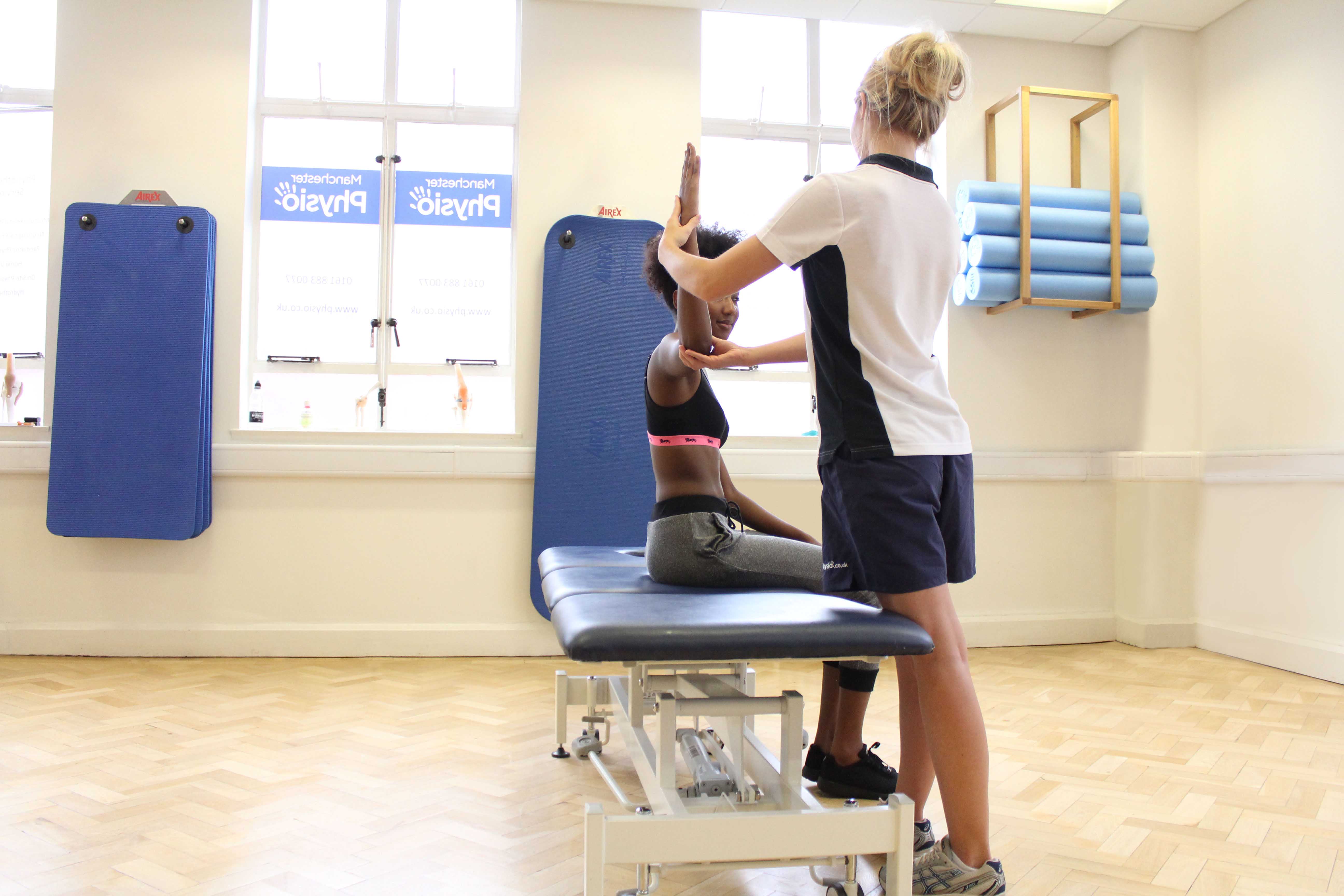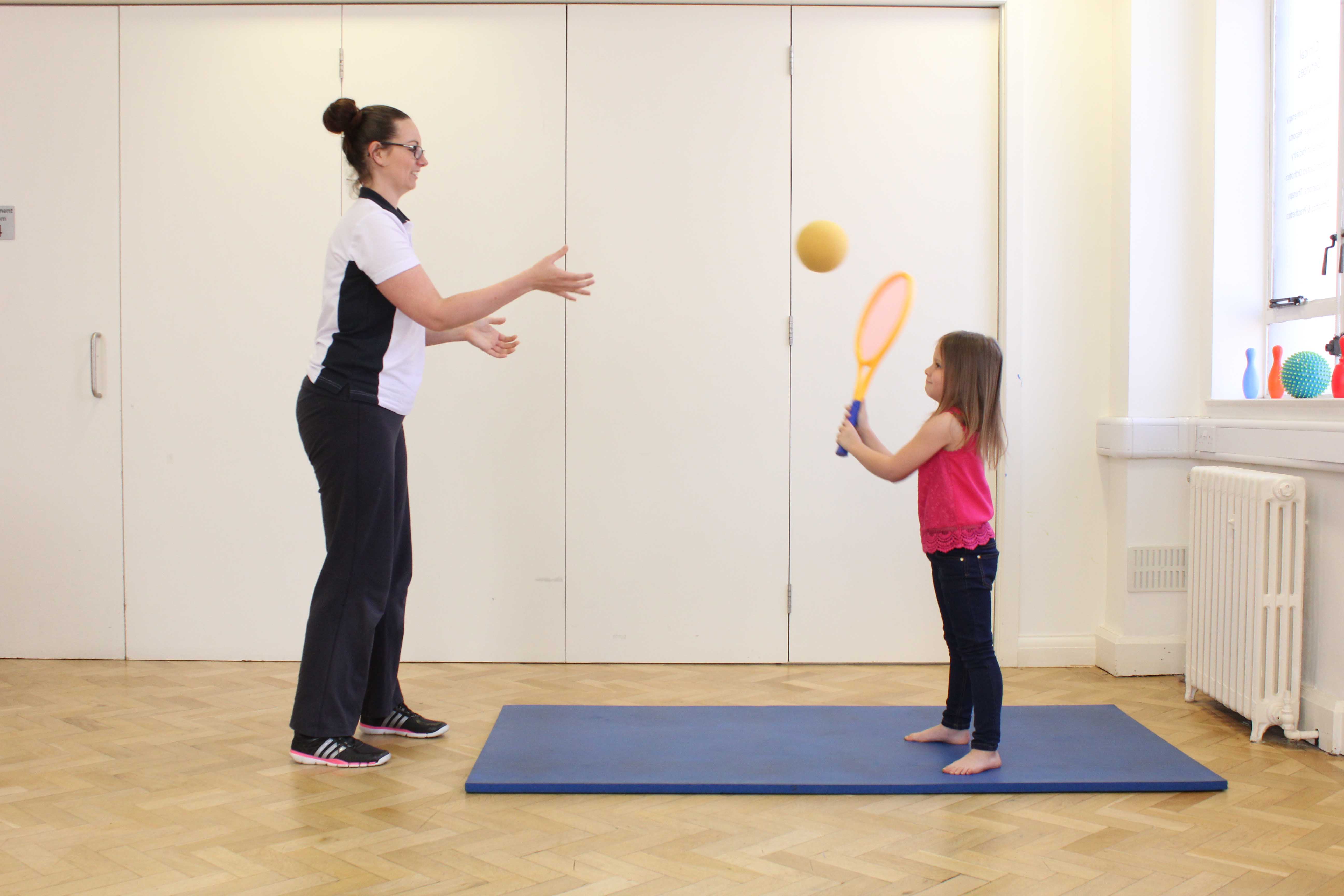Total Elbow Replacement
A total elbow replacement, also known as total elbow arthroplasty is a surgical procedure whereby the injured or damaged bones of the elbow joint are replaced with an artificial joint. Total elbow arthroplasty is most commonlyperformed for degenerative diseases such as osteoarthritis or rheumatoid arthritis and is also performed as a treatment for severe injuries such as a fracture of the elbow joint. Physiotherapy plays a crucial role in rehabilitation and recovery following total elbow replacement.
The elbow joint is made up of the ends of the humerus (upper arm bone), the ulna (larger bone of the forearm, on the opposite side of the thumb), and the radius (the smaller bone of the forearm that makes up elbow joint on the same side as the thumb). The ends of the bones in the elbow joint are covered with articular cartilage which helps the bones of the joint glide over the each other smoothly and efficiently during movement. However, the cartilage can get damaged or injured for a number of reasons including elbow osteoarthritis, traumaor other destructive diseases of the elbow joint. Damage to the articular cartilage causes the joint to become very painful and stiff.
Total elbow replacement is effective in relieving symptoms including pain, stiffness and reduced function in the elbow joint caused by damage to the articular cartilage.
Artificial elbow
The artificial elbow (or prosthesis) that replaces the damaged elbow acts like a hinge and has two parts. The humeral component replaces the lower end of the humerus in the upper arm. The humeral component has a long stem that anchors it into the hollow centre of the humerus. The ulnar component replaces the top end of the ulnar and has a shorter metal stem that anchors it into the hollow centre of the ulnar. The ends of the prosthesis act as a hinge which is made of metal and plastic. The hinge closely replicates the original elbow joint and the two parts glide easily against each other during movement.
Elbow replacement surgery
Most elbow replacement surgeries are done under general anaesthesia. Once under anaesthesia the surgeon make an incision in the back of the elbow. Entering the joint from the back helps prevent any damage to the numerous blood vessels and nerves on the inside of the elbow. After making the incision, the surgeon will then move the tendons and ligaments out of the way to expose the elbow joint. The surgeon then carefully removes the damaged joint surfaces of the ulnar, humerus and in some cases the radius (smaller elbow joint surface). A hollow hole is then made into both bones in an aim to hold the metal stems of the artificial components. The surgeon then fits the artificial parts of the ulnar and humerus into the hollow space which are then fixed and cemented into place either using a specialised surgical cement. Another way of fixing the replacement parts is to use an un-cemented prosthesis that has a fine mesh of holes on the surface. Over time, the bone will grow into the mesh, anchoring the prosthesis to the bone. Once the artificial parts are fixed into place and the hinged ends are put together, the surgeon will check for proper fit and motion and then the incision is closed up using stitches or sutures.
It is essential to undergo a total elbow replacement to treat symptom such as severe pain, stiffness and reduced function due to osteoarthritis of the elbow joint, trauma or other degenerative diseases. The length of time a replacement elbow lasts varies from patient to patient. It depends on many factors, such as a patient's physical condition and activity level, as well as the accuracy of implant placement during surgery.
Physiotherapy is the key for successful rehabilitation and recovery after total elbow replacement surgery. Physiotherapy after elbow replacement will help ensure the success of the surgery, prevent the likelihood of any problems occurring after the surgery and guarantee the return of full or near to full function in the elbow joint after total elbow joint replacement.
 Above: Passive stretches and mobilisations of the elbow by MSK therapist
Above: Passive stretches and mobilisations of the elbow by MSK therapistPhysiotherapy before elbow replacement
Physiotherapy before you undergo total elbow replacement is recommended to give you a head start on your recovery afterwards. The purpose of having preoperative physiotherapy is to check your current pain levels, ability to do activities, and the movement and strength in your elbow. The main purpose of Physiotherapy with Physio.co.uk before your surgery is to better prepare your elbow for the operation whilst also preventing the likelihood of any problems occurring once you have had your total elbow replacement. Physiotherapy prior to the operation will give you the chance to learn some of the exercises you’ll use during our recovery as well as aim to strengthen the muscles around your elbow as much as possible before the surgery. This head start will help ensure a faster and more successful recovery and also help guarantee the return of full and painless function in your elbow once you have had total elbow replacement.
After elbow replacement surgery
After your total elbow replacement surgery, you will experience pain, discomfort, and significant swelling in and around your elbow joint. After the surgery your elbow will be covered by a thick bandage and a splint. Depending on the type of implant used, your elbow will be positioned straight or slightly bent for first 36 hours after your surgery. Drains may be attached to your elbow joint to reduce swelling but this will be removed within the first day. You will be given pain modalities to control the pain. You will be advised to keep your elbow elevated above chest level for several days to avoid excessive swelling and throbbing. You can keep it propped up on a stack of pillows when sleeping or sitting. Physiotherapy will begin immediately after your elbow replacement surgery to maintain range of movement and reduce stiffness in your elbow joint. After the initial 36 hours and once you have been discharged you will be given a sling to use for essential support and protection during everyday tasks. You will be unable to drive after the surgery until you have full and painless range of movement in your arm.
 Above: Passive stretches and mobilisations of the elbow by MSK therapist
Above: Passive stretches and mobilisations of the elbow by MSK therapistPhysiotherapy after elbow replacement
A comprehensive physiotherapy course with Physio.co.uk is crucial after you have had total elbow replacement to maximise the success of the surgery and return the full function in your elbow joint. Without full and painless function in your elbow you will not have efficient function of your hand and you will consequently struggle to complete everyday tasks. It is for this reason that physiotherapy with Physio.co.uk after your elbow replacement is imperative to return the full function in your affected upper limb. The main goal of physiotherapy with Physio.co.uk is to control your pain and swelling, improve the strength in your arm, increase range of motion and maximise the function in your elbow as soon as possible after your elbow replacement surgery. Recovery will take up to three months after elbow replacement surgery.
1-4 weeks
In the initial stages after your elbow replacement, your physiotherapy will focus on controlling the pain, swelling and muscle spasms that you will experience as a result of the surgery. Goals of your physiotherapy with Physio.co.uk will also focus on increasing range of movement in your elbow as soon as possible after your surgery to reduce stiffness. Physio.co.uk will also include gentle strengthening exercises for the muscles around your elbow, hand and shoulder to improve function of your affected limb. Your physiotherapy will include:
- Cryotherapy (Ice)
- Use of sling when out and about for protection (not necessary all the time)
- Passive range of movement exercises for elbow and wrist (bending, straightening, twisting)
- Progression to active range of movement exercises
- Isometric (hold) strengthening exercises for muscles around elbow joint (pronator teres, supinator, brachioradialis, biceps, triceps)
- Stretching exercises to increase flexibility
- Strengthening exercises for muscles in wrist, hand and shoulder
- Activities for opposite arm
 Above: Active stretches and mobilisation of the elbow with MSK therapist supervision.
Above: Active stretches and mobilisation of the elbow with MSK therapist supervision.5-8 weeks
After the first month of your rehabilitation with Physio.co.uk your physiotherapy will focus on the continuation and progression of activities from previous weeks. The use of your sling should be fully discontinued at this point. The main goal of your physiotherapy programme at this point is to continue to increase the strength, range of movement, flexibility and function in your affected arm. Your physiotherapy will include:
- Continuation of modalities to control pain and swelling (if applicable)
- Active range of movement exercises (bending, straightening and twisting elbow joint)
- Active strengthening exercises for muscles in and around elbow
- Strengthening, stretching and range of movement exercises for wrist and hand
- Strengthening, stretching and range of movement exercises for shoulder
- Activities for opposite arm
- Arm cycle
- Hydrotherapy
9-12 weeks
After successful physiotherapy, you will have seen marked improvements in the function of your new elbow and arm by the third month. You will not be experiencing any pain in your new elbow and may still have mild swelling. The goals of your physiotherapy with Physio.co.uk will continue to focus on regaining the full function and strength in your elbow and arm. It is also necessary to continue exercises that aim to improve the strength and range of movement in your wrist, hand and shoulder of your affected arm for extra support and to maximise function. Additionally, Physio.co.uk will now aim to increase your cardiovascular fitness and muscle endurance to further maximise the function in your new elbow joint. Your physiotherapy will include:
- Continuation of strengthening, stretching and range of movement exercises for muscles in elbow
- Continuation of strengthening, stretching and range of movement exercises for wrist, hand and shoulder of affected arm and also equivalent exercises for opposite arm
- Arm cycle (resistance as tolerated)
- Hydrotherapy
Full recovery after total elbow replacement may take up to 3 months. The success and rate of your recovery highly depends on your commitment and adherence to the comprehensive physiotherapy programme provided by Physio.co.uk as well as the initial condition of your elbow prior to your total elbow replacement.
 Above: Passive stretch of muscles and connective tissue of the uppper arm
Above: Passive stretch of muscles and connective tissue of the uppper armSummary
Total elbow replacement is a surgical procedure to replace the damaged surfaces of the elbow joint to relieve the pain and disability caused by severe degenerative joint problems such asosteoarthritis.It is essential to undergo total elbow replacement to significantly relieve symptoms caused by problems within the elbow joint and improve function. After total elbow replacement, a comprehensive physiotherapy programme with Physio.co.uk is crucial to ensure the success of the surgery, prevent the likelihood of any future problems and prolong the life of the elbow replacement. A physiotherapy programme with Physio.co.uk offers the return of symptom free, full or near to full function in the elbow joint. Commitment to a personal physiotherapy programme with Physio.co.uk will allow a more rapid return to everyday activities, work, hobbies, and sport. Furthermore, a physiotherapy programme with Physio.co.uk is highly important in the full and fast recovery of your elbow after total elbow replacement. Call Physio.co.uk now on 0330 088 7800 for more information or to book an appointment please contact us.

 0330 088 7800
0330 088 7800


































